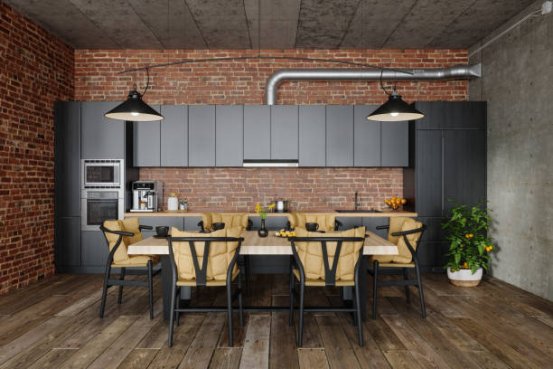Home Improvement
Modern Kitchen Remodeling Trends for 2025
Kitchens in 2025 are embracing bold design, smart technology, and eco-friendly materials to create functional and stylish spaces. Homeowners are prioritizing innovation, sustainability, and convenience in modern kitchen layouts.
Kitchens in 2025 are embracing bold design, smart technology, and eco-friendly materials to create functional and stylish spaces. Homeowners are prioritizing innovation, sustainability, and convenience in modern kitchen layouts.

Sustainable Materials Take Center Stage
Sustainability is now a cornerstone of kitchen design. Eco-friendly options such as bamboo, reclaimed wood, and recycled metals are increasingly used in cabinetry, countertops, and decorative elements. Low-VOC paints and finishes enhance indoor air quality without sacrificing aesthetics. Bio-based composites combining natural fibers with durable resins provide strength while minimizing environmental impact. Local sourcing of materials further supports communities and reduces transportation emissions.
Smart Technology Appliances for Modern Living
The kitchen is transforming into a digital hub. Smart appliances simplify everyday tasks, from refrigerators that monitor groceries to ovens controllable via smartphone. Voice-activated systems manage lighting, temperature, and even entertainment. Energy-monitoring tools help reduce utility bills, while meal-planning features limit food waste. Although initial costs may be higher, the long-term efficiency and convenience make smart technology an essential component of the modern kitchen.
Open-Concept Design Expands
Open kitchens remain highly popular, with 2025 designs emphasizing flexibility and flow. Half walls, oversized islands, or movable partitions replace traditional barriers to create adaptable spaces. Islands serve as prep areas, social hubs, and storage simultaneously. This fluid layout encourages interaction, enabling homeowners to connect with guests or assist family members while cooking, reflecting a preference for shared, versatile spaces.
Bold Colors and Patterns Transform Aesthetics
White cabinets are no longer the default choice. Deep blues, forest greens, and rich blacks dominate, complemented by statement backsplashes and patterned tiles. Geometric motifs, vibrant mosaics, and textured finishes give kitchens a curated, unique feel. Matte surfaces add warmth, while glossy finishes enhance light reflection. Even small touches, like a colorful island or eye-catching backsplash, can refresh a dated kitchen without a full remodel.
Multifunctional Spaces for Modern Living
Kitchens increasingly serve multiple roles, doubling as offices, homework areas, or entertainment zones. Foldable furniture, expandable tables, and convertible islands maximize versatility. Thoughtful zoning separates cooking and cleaning areas to enhance efficiency. These layouts support both productivity and relaxation, catering to contemporary lifestyle demands.
In 2025, kitchen design blends bold aesthetics, smart technology, and sustainable practices, transforming the heart of the home into a space that is stylish, efficient, and environmentally conscious.
How do you like this article?




